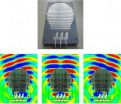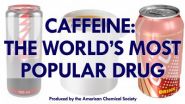(Press-News.org) Stroke patients managed by a pharmacist had a 12.5% improvement in blood pressure and low-density lipoprotein (LDL), or "bad" cholesterol levels compared with a control group, according to a clinical trial published in CMAJ (Canadian Medical Association Journal).
Patients who have a stroke or "mini stroke" (transient ischemic attack) are at high risk of adverse cardiovascular events. Management of high blood pressure and cholesterol after a stroke is important because it can substantially reduce the risk of a negative event; however, many patients receive suboptimal care.
Some evidence indicates designated "case managers" could better manage patients to reduce the risk.
Researchers undertook a randomized controlled trial to determine if a pharmacist case manager could improve blood pressure and cholesterol levels in people who had had strokes or mini strokes. The trial included 279 adult participants in Edmonton, Alberta, who either received care from a pharmacist or a nurse (control group) who managed the case over a 6-month period. About 60% of participants were 65 years of age or older and 58% were men.
Both nurses and pharmacists counselled participants on diet, smoking, exercise and other lifestyle factors; checked blood pressure and LDL levels and provided summaries to patients' physicians after each visit. In addition, pharmacists prescribed medications based on the current Canadian guidelines and adjusted doses to achieve the best result for each patient.
At the start of the study, none of the participants had blood pressure or cholesterol levels that met targets recommended in the Canadian Stroke Guidelines. By 6 months, both groups had significant improvements, with a 30% improvement in the control group managed by nurses and a 43% improvement in patients managed by pharmacists.
"Calling our control arm "usual care" would be a misnomer, and patients in the active control group (nurse-led group) showed a 30% absolute improvement in risk factor control over a 6-month period," writes Dr. Finlay McAlister, Division of General Internal Medicine, and the Epidemiology Coordinating and Research (EPICORE) Centre, University of Alberta, with coauthors. "The 43% absolute improvement at 6 months seen in our pharmacist case manager group was achieved despite the fact that over three-quarters of patients were already taking an antihypertensive or lipid-lowering medication at baseline."
The pharmacists did not receive additional training, but all were at similar stages of their careers and received the same patient educational materials and treatment guidelines.
Although patients in both groups had similar reductions in blood pressure, patients in the pharmacist-led group had greater improvements in LDL cholesterol targets (51%) compared with 34% in the nurse-led group. The researchers point out that the pharmacist case managers actively adjusted medication to achieve desired results (medication titration) and suggest this contributed to the beneficial effect. Several other studies involving case managers who did not have prescribing authority found minimal benefit.
"We believe that both approaches hold great promise, not only for patients with stroke or transient ischemic attack but also for all patients with, or at high risk of, vascular disease, and our study provides much-needed information on their comparative effectiveness," the authors conclude.
INFORMATION: END
Pharmacists can significantly improve blood pressure, cholesterol in stroke patients
Randomized controlled trial
2014-04-14
ELSE PRESS RELEASES FROM THIS DATE:
'MicroRNA' could be key target for bowel cancer treatment
2014-04-14
Scientists found that the molecule, called microRNA 135b, is a vital 'worker' employed by several important cancer genes to drive the growth of bowel cancers.
Drugs targeted at the microRNA could knock out the effects of multiple cancer-causing mutations at once, while tests for it could identify patients with the most aggressive disease, the researchers believe.
The research was carried out by an international team including scientists based at The Institute of Cancer Research, London, the University of Glasgow and Ohio State University in the US.
Scientists tested ...
Study identifies a likely key driver of colorectal cancer development and progression
2014-04-14
COLUMBUS, Ohio – A new study identifies a molecule that is a probable driving force in colorectal cancer and suggests that the molecule could be an important target for colorectal cancer treatment and a valuable biomarker of tumor progression.
The study of microRNA-135b (miR-135b) in two animal models and human tumors was published in the journal Cancer Cell and was led by researchers at The Ohio State University Comprehensive Cancer Center – Arthur G. James Cancer Hospital and Richard J. Solove Research Institute (OSUCCC – James) and at the University of Glasgow in ...
Dietary supplement use among US adults more prevalent than previously thought
2014-04-14
Washington, D.C., April 14, 2014—Dietary supplement use by U.S. adults is more prevalent than indicated by published data from the National Health and Nutrition Examination Surveys (NHANES), according to a new article in the peer-reviewed Journal of the American College of Nutrition (JACN). The review article is based on five consecutive years of online market research studies, conducted by Ipsos Public Affairs for the Council for Responsible Nutrition (CRN).
According to Annette Dickinson, Ph.D., corresponding author and a consultant for CRN, "This new review adds to ...
Young dads at high risk of depression, too
2014-04-14
CHICAGO --- Depression can hit young fathers hard -- with symptoms increasing dramatically during some of the most important years of their children's lives, a new Northwestern Medicine® study has found.
Depressive symptoms increased on average by 68 percent over the first five years of fatherhood for these young men, who were around 25 years old when they became fathers and whom lived in the same home as their children. The results of the study were published April 14 in the journal Pediatrics.
This study is the first to identify when young fathers are at increased ...
Osteoporosis drugs appear to impede cell membrane repair
2014-04-14
AUGUSTA, Ga. –A class of drugs widely used to treat osteoporosis appears to impede a cell's ability to repair a protective outer membrane that helps determine what enters and exits, researchers report.
The inability to quickly repair a membrane is lethal to a cell and may help explain the rare and serious side effect of jawbone destruction that can occur following dental work in patients taking these drugs, said Caroline Lewis, a sophomore at the Medical College of Georgia at Georgia Regents University.
"The bottom line is it inhibits cell membrane repair in two distinct ...
Long-term antibiotic treatment for Q fever causes weight gain
2014-04-14
Scientists have unearthed still more evidence that antibiotics can contribute to obesity. Research published ahead of print in the journal Antimicrobial Agents and Chemotherapy suggests that patients on long-term antibiotic treatment gained weight and had significant changes in their gut microbiota.
The study, led by Didier Raoult, of Aix-Marseille University, Marseille, France, followed 48 patients who were being treated long-term with doxycycline and hydroxychloroquine for Q fever, and 34 control subjects. Nearly one quarter of the treated patients gained anywhere ...
Shiny quantum dots brighten future of solar cells
2014-04-14
A house window that doubles as a solar panel could be on the horizon, thanks to recent quantum-dot work by Los Alamos National Laboratory researchers in collaboration with scientists from University of Milano-Bicocca (UNIMIB), Italy. Their project demonstrates that superior light-emitting properties of quantum dots can be applied in solar energy by helping more efficiently harvest sunlight.
"The key accomplishment is the demonstration of large-area luminescent solar concentrators that use a new generation of specially engineered quantum dots," said lead researcher Victor ...
UT Dallas study: Youth who fail to envision future commit more crimes
2014-04-14
In a UT Dallas study involving serious youth offenders, the answer to one open-ended question predicted the teenagers' offending patterns for the next seven years: "How long do you think you'll live?"
According to the study, having little hope for the future encourages offending over time.
Author Dr. Alex Piquero said the study found those who don't view a very long life ahead of them offend at very high rates and commit more serious offenses, while those who believe they're going to die much later in life offend much less.
"In a lot of distressed communities and for ...
Device turns flat surface into spherical antenna
2014-04-14
WASHINGTON D.C., April 14, 2014 -- By depositing an array of tiny, metallic, U-shaped structures onto a dielectric material, a team of researchers in China has created a new artificial surface that can bend and focus electromagnetic waves the same way an antenna does.
This breakthrough, which the team is calling the first broadband transformation optics metasurface lens, may lead to the creation of new types of antennas that are flat, ultra low-profile or conformal to the shape of curved surfaces.
The new lens, described in AIP Publishing's journal Applied Physics Letters, ...
The science of caffeine, the world's most popular drug (video)
2014-04-14
WASHINGTON, April 14, 2014 — It seems there are new caffeine-infused products hitting the shelves every day. From energy drinks to gum and even jerky, our love affair with that little molecule shows no signs of slowing. In the American Chemical Society's (ACS') latest Reactions video, we look at the science behind the world's most popular drug, including why it keeps you awake and how much caffeine is too much. The video is available at http://youtu.be/YuJOhpNS0IY.
INFORMATION:
Subscribe to the series at Reactions YouTube, and follow us on Twitter @ACSreactions to be ...
LAST 30 PRESS RELEASES:
Numbers in our sights affect how we perceive space
SIMJ announces global collaborative book project in commemoration of its 75th anniversary
Air pollution exposure and birth weight
Obstructive sleep apnea risk and mental health conditions among older adults
How talking slows eye movements behind the wheel
The Ceramic Society of Japan’s Oxoate Ceramics Research Association launches new international book project
Heart-brain connection: international study reveals the role of the vagus nerve in keeping the heart young
Researchers identify Rb1 as a predictive biomarker for a new therapeutic strategy in some breast cancers
Survey reveals ethical gaps slowing AI adoption in pediatric surgery
Stimulant ADHD medications work differently than thought
AI overestimates how smart people are, according to HSE economists
HSE researchers create genome-wide map of quadruplexes
Scientists boost cell "powerhouses" to burn more calories
Automatic label checking: The missing step in making reliable medical AI
Low daily alcohol intake linked to 50% heightened mouth cancer risk in India
American Meteorological Society announces Rick Spinrad as 2026 President-Elect
Biomass-based carbon capture spotlighted in newly released global climate webinar recording
Illuminating invisible nano pollutants: advanced bioimaging tracks the full journey of emerging nanoscale contaminants in living systems
How does age affect recovery from spinal cord injury?
Novel AI tool offers prognosis for patients with head and neck cancer
Fathers’ microplastic exposure tied to their children’s metabolic problems
Research validates laboratory model for studying high-grade serous ovarian cancer
SIR 2026 delivers transformative breakthroughs in minimally invasive medicine to improve patient care
Stem Cell Reports most downloaded papers of 2025 highlight the breadth and impact of stem cell research
Oxford-led study estimates NHS spends around 3% of its primary and secondary care budget on the health impacts of heat and cold in England
A researcher’s long quest leads to a smart composite breakthrough
Urban wild bees act as “microbial sensors” of city health.
New study finds where you live affects recovery after a hip fracture
Forecasting the impact of fully automated vehicle adoption on US road traffic injuries
Alcohol-related hospitalizations from 2016 to 2022
[Press-News.org] Pharmacists can significantly improve blood pressure, cholesterol in stroke patientsRandomized controlled trial




